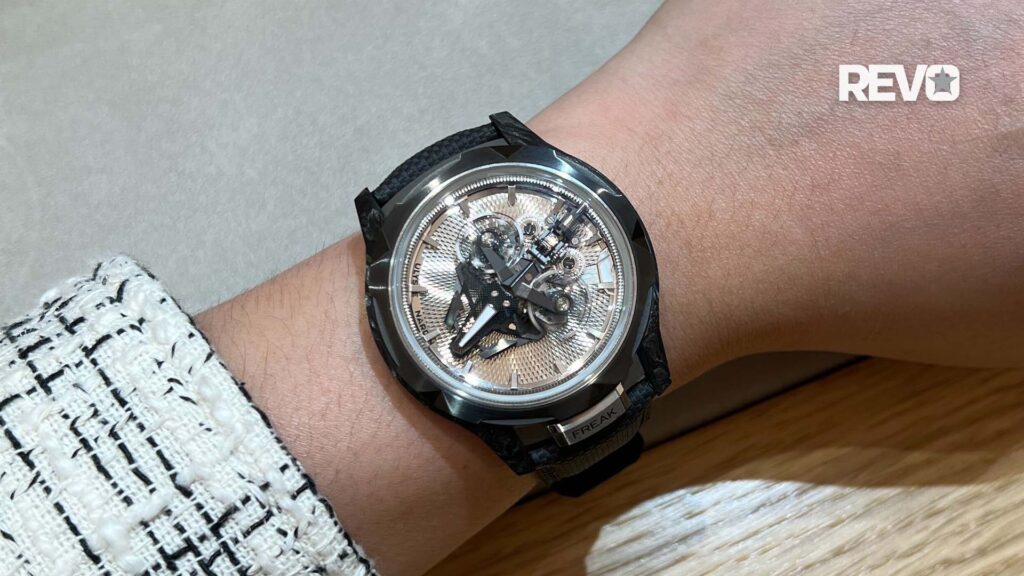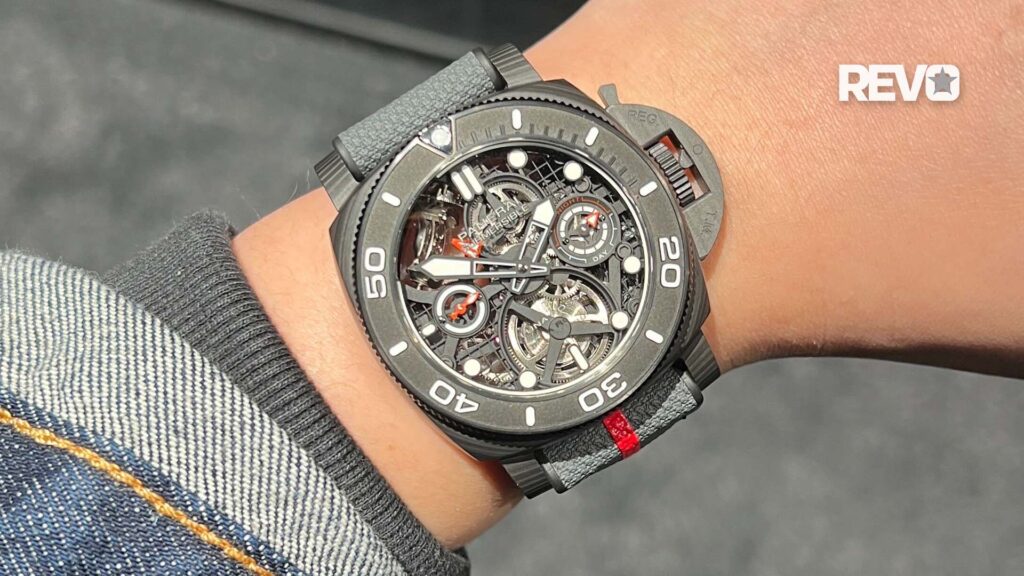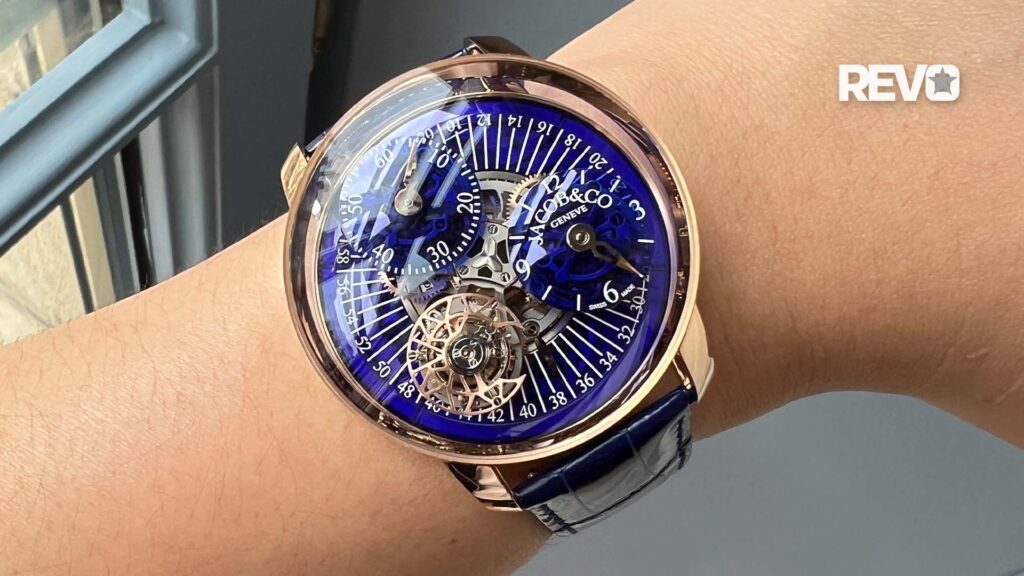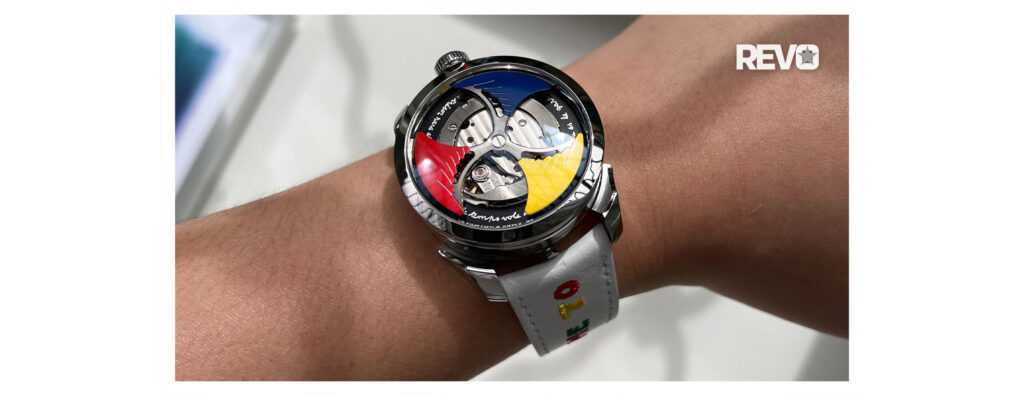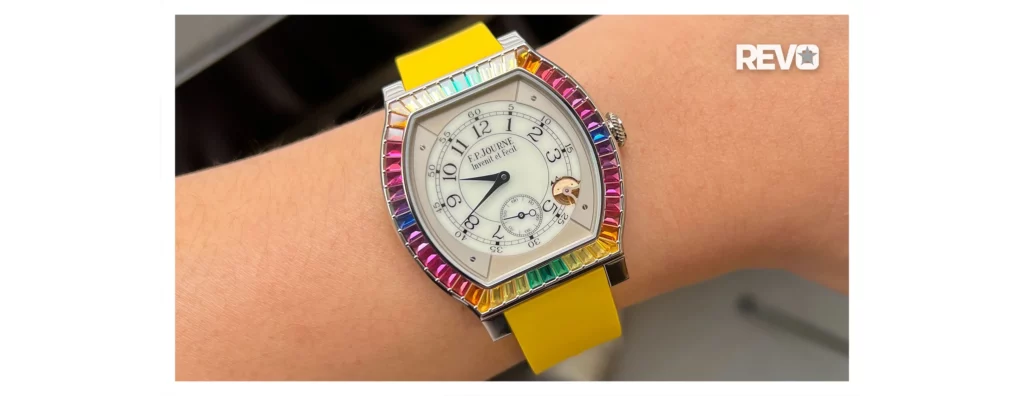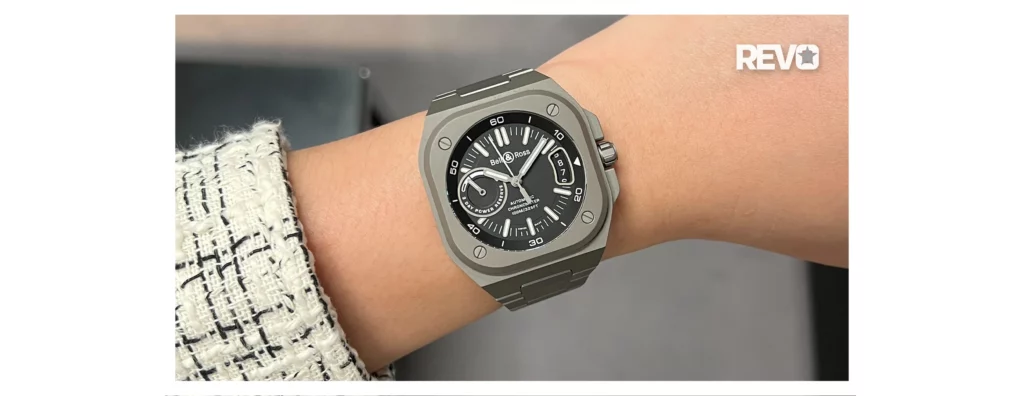Casio G-Shock
No Corners Cut: The 25-Part Bezel of the G-SHOCK MRG-B5000
Such a high level of familiarity can pose quite a challenge for the design and R&D departments behind the G-SHOCK, when having to reimagine the watch countless times over through the past four decades. Now imagine the challenge at hand when the teams were tasked to reconfigure one of the G-SHOCK’s most recognized icons — the one that started it all, the DW-5000C.
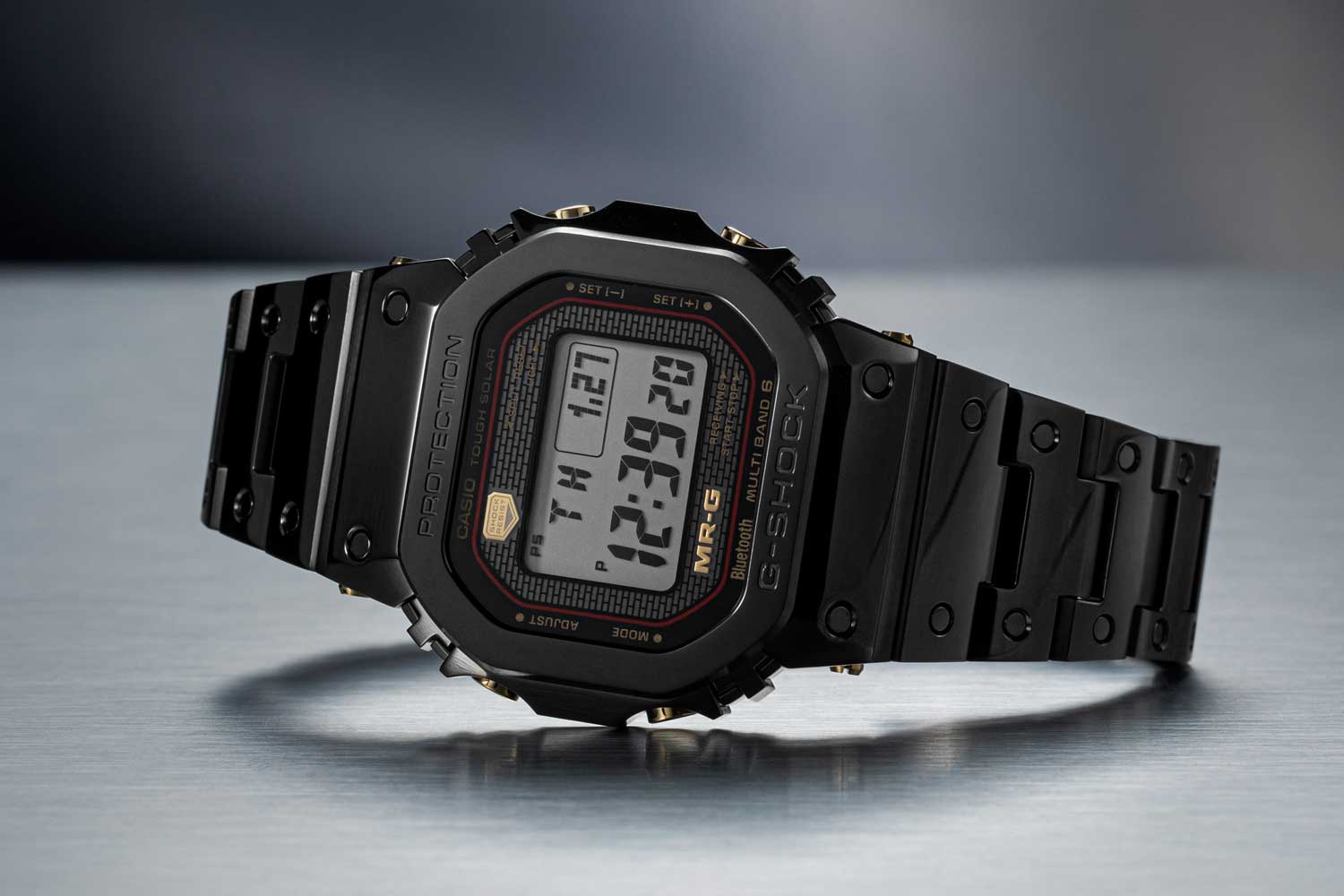
The G-SHOCK MRG-B5000B-1 which features a sophisticated polished finish realised with a multi-component bezel structure (©Revolution)
Recounting why it is exactly that we can wear a G-SHOCK with a high level of nonchalance goes back to the shock-resistance implementations that were imbued into the watch by its inventor, the living legend who is Mr. Kikuo Ibe — presently Casio’s Senior Fellow at the Development Promotion Unit. Ibe-san breaks down his 1983 approach to shock-resistance for the G-SHOCK in three aspects: its hollow internal structure, its all-directional covering and, of course, the original shape itself.
Says Ibe-san, “The hollow structure is the original case structure that was created for the first G-SHOCK. From the inspiration that shock could not be transmitted in a bouncing rubber ball, we implemented a watch with a module that would be afloat in its case. This structure mitigates the shock from outside to the module. The outer case (bezel) can be the first absorber of the shock when the watch falls from any angle. This structure is the innovative toughness structure when we talk about the origin of G-SHOCK and its toughness.”

Inventor of the G-SHOCK and living legend, Mr Kikuo Ibe (©Revolution)
But what did the actual shape of the original G-SHOCK help to achieve in a time and space when most wristwatches were circular. Ibe-san says, “The original [case and bezel] design was adopted in the first G-SHOCK. We pursued universal usability in both the internal design, such as the module structure, or digital display, and the external design, for example, material, size and shape. The iconic design was the original form, but at the same time, the ultimate form with perfection. It has been inherited as the symbol of G-Shock in the 5000/5600 series without changing its shape.”

Ibe-san was inspired by the idea of suspending the time module within a bouncing rubber ball that would protect the critical components of the watch from extensive shock (Image: gshock.com)
Explains Ibe-san, “The structure of the bezel (outer case), which covers the case, eases the shock from various directions. Based on this structure, new shock-resistant structures have been continually developed and adopted. With the evolution of material, the bezel (outer case) and the case performance has been improved.” In line with this, the launch of the immensely successful GMW-B5000 foreseeably presented hurdles. It was the first time that Casio sought to execute the mono-structure of the outer bezel of the DW-5000C in steel.
Shares Mr Jyunichi Izumi, Project Manager at Casio’s Development Promotion Unit, “Producing watches in resin versus metal are two very unique processes. We didn’t just set out to reproduce the case shape of the DW-5000C, but all of its complicated details such as its dimples, bumps and dips across the case and bracelet. We also had to make certain adjustments to the original approach. For example, compared to DW-5000C, the GMW-B5000 is solar powered, is able to receive radio wave signals and supports Bluetooth Low Energy (BLE). To make its size as compact as the DW-5000C, we have made full use of energy-saving methods and miniaturization of module parts, and high-density mounting to maintain the original look and feel.”
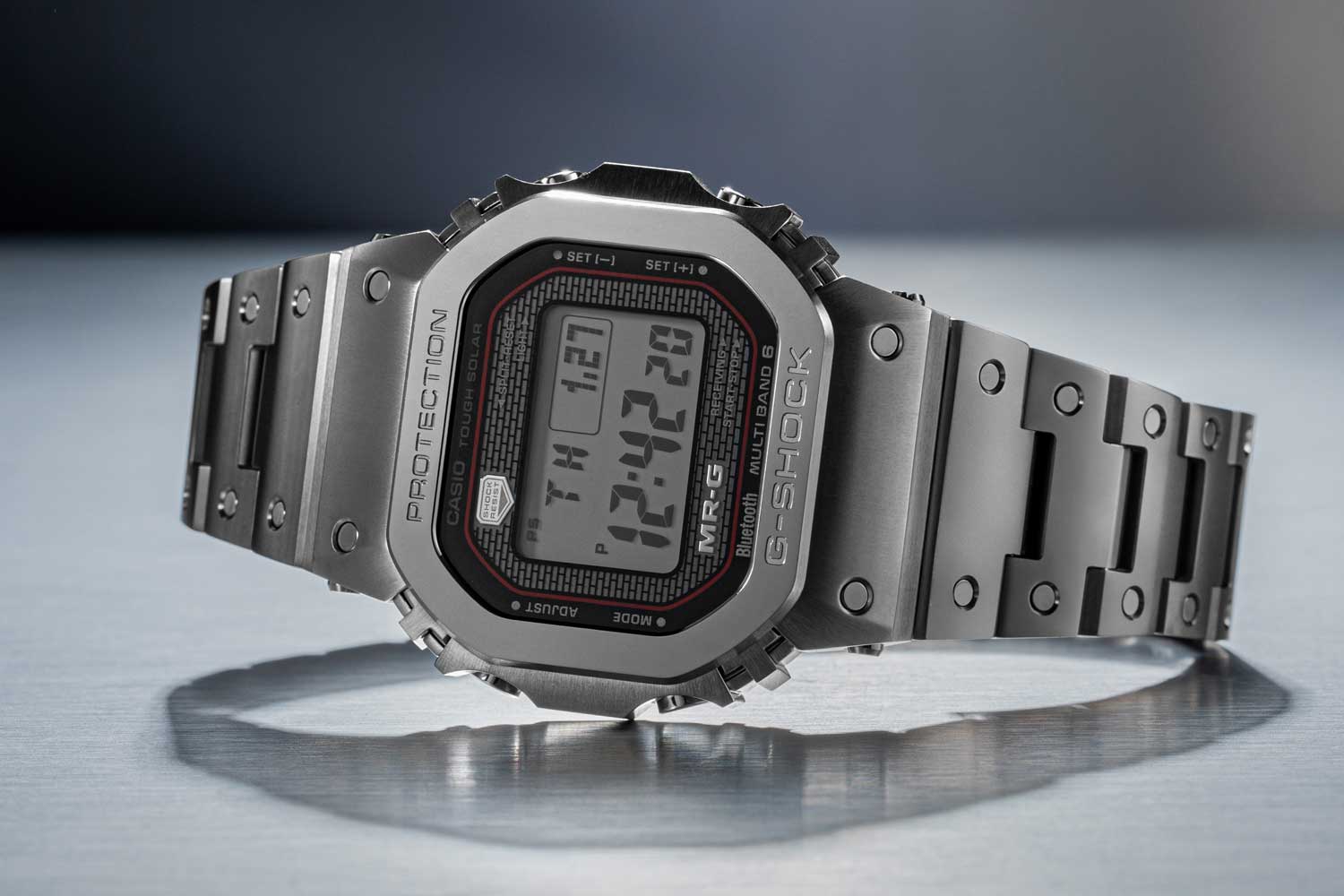
G-SHOCK MRG-B5000D-1 in stainless steel (©Revolution)

Mr Jyunichi Izumi, Project Manager at Casio’s Development Promotion Unit
In 2019, Casio launched the G-SHOCK GMW-B5000TB, which very quickly took the steel design of the GMW-B5000 to have it forged out of titanium. This was followed shortly after by the GMW-B5000TCM-1. All of these maintained the mono-structure construction of the outer bezel. But that’s not to say that moving from steel to titanium was a seamless feat. Shares Izumi-san, “Stainless steel and titanium have different strengths and moldability, which necessitated a new structure, as well as, manufacturing methods. We created a new mold for the GMW-B5000TB. This new mold, along with partial modifications to some parts, made manufacturing possible without compromising the characteristics of titanium.”
The Ultimate Expression of Toughness
In 2022, Casio has launched another titanium-based G-SHOCK that is modeled after the DW-5000C design, but it has been positioned as the kiwami, meaning the pinnacle G-SHOCK. This watch is the MRG-B5000. The elevation of the watch this time has required that it should be held under the MRG collection. But why? Explains, Mr Shingo Ishizaka at Casio’s Development Promotion Unit, “A metal version of the original G-SHOCK DW-5000C, the GMW-B5000 series created a new sense of value for us. However, with the high-performance material and high-quality finish applied to the MRG-B5000, we wanted to realize the pinnacle expression of our origins.”
Keeping in line with this desire, the MRG-B5000 is forged with a COBARION and Ti64 — or grade 5 titanium — bezel, for which the research and development team had to resort to a new assembly method that required for them to break the bezel of the DW-5000 into 25 components. Thereafter the watch has a DAT55G bracelet and Ti64 case.
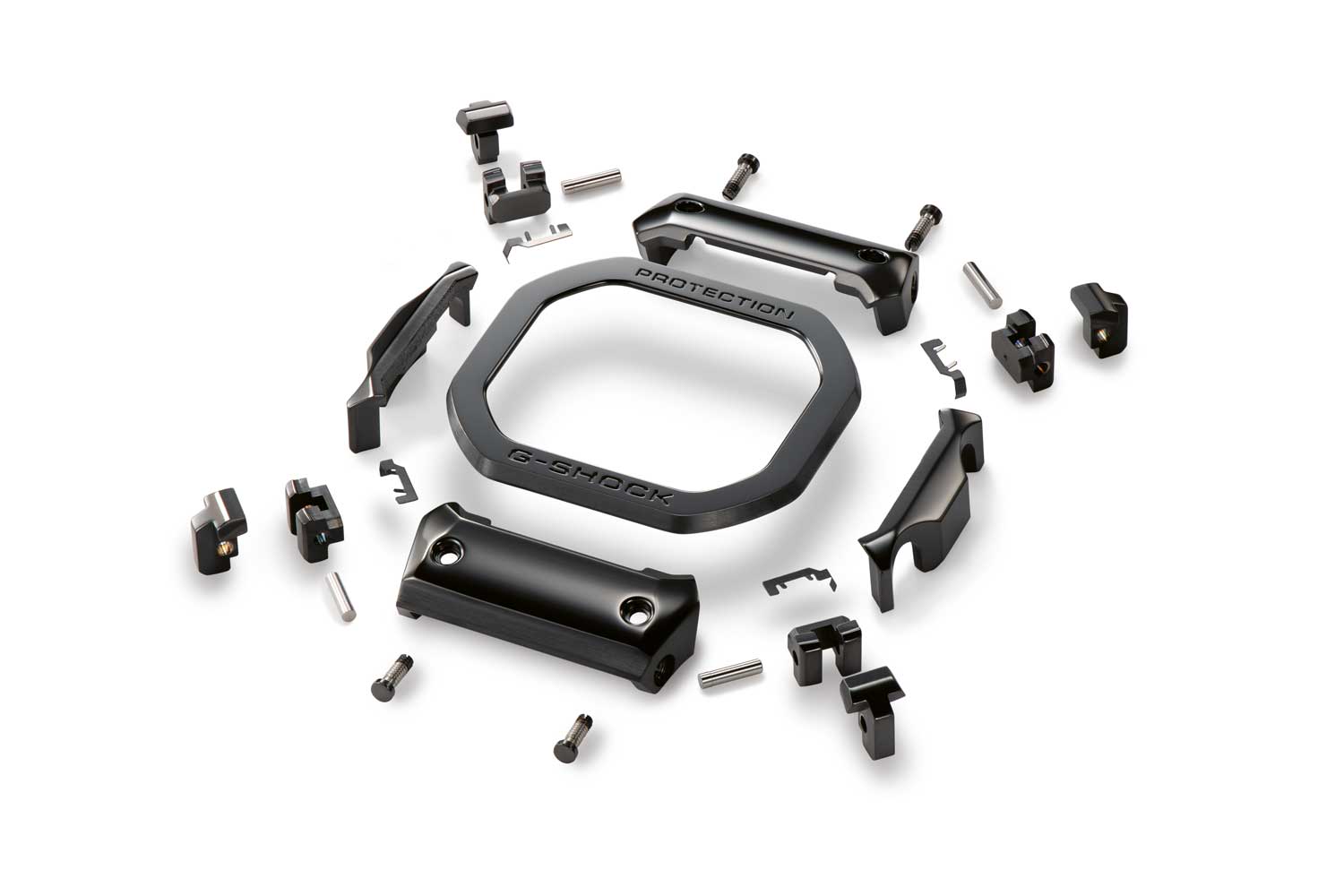
The newly developed Multi-guard Structure results from a redesign of the mono-structure iconic bezel broken down into 25 parts for the bezel of the MRG-B5000 (Image: gshock.com)
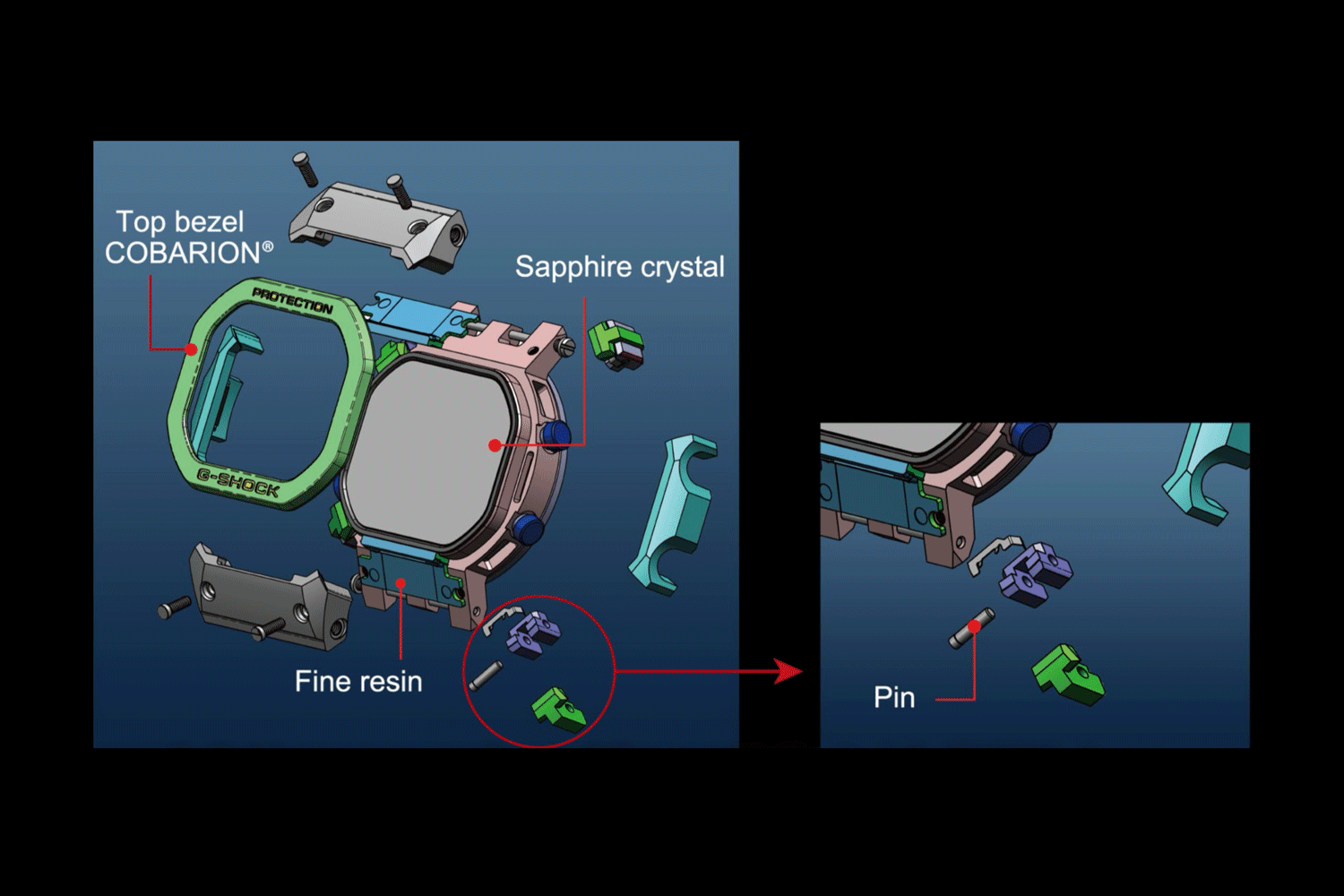
The newly developed Multi-guard Structure protects the time module with superior shock-absorption; the multi-component bezel incorporates four-cornered suspension components combining T-shaped bars and flat springs as well as silicone buffering to ensure the MRG-B5000's resistance to shock (Image: gshock.com)
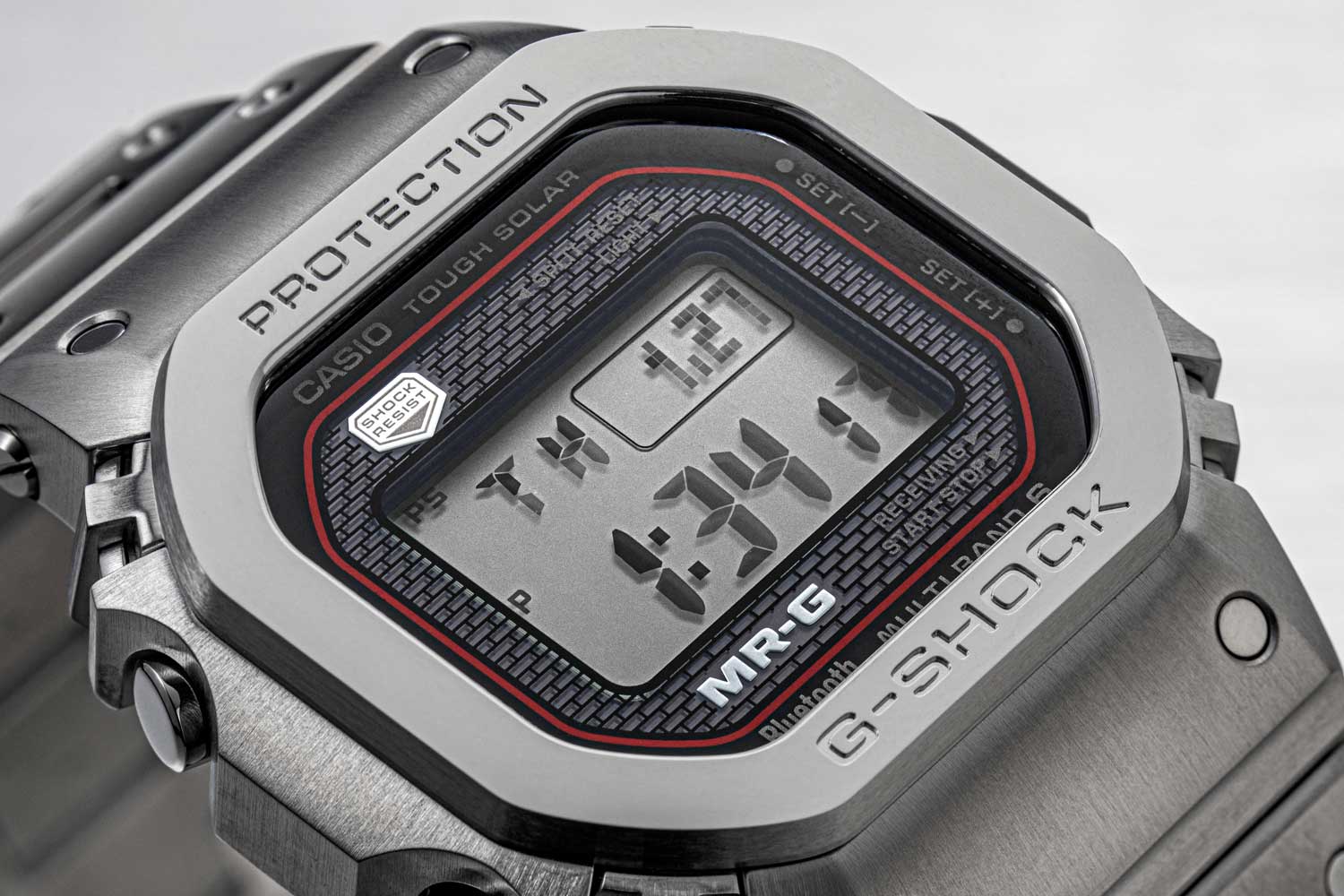
The complicated multi-part bezel, case and bracelet of the MRG-B5000 all feature Sallaz polishing executed by the hands of expert watchmakers on the Premium Production Line at Casio’s Yamagata manufacture (©Revolution)
At this point, you may ask: If the mono-structure bezel of the DW-5000C has been so great for shock resistance all this while, why go through the trouble of having to reproduce it with 25 different components and different alloys?
A larger purpose here was for Casio to showcase what it was capable of doing when working with extreme novel materials. However, the reason for a 25-part bezel construction was simpler: they wanted to polish every surface of the timepiece, as a way to exude a sense of refinement like never before.
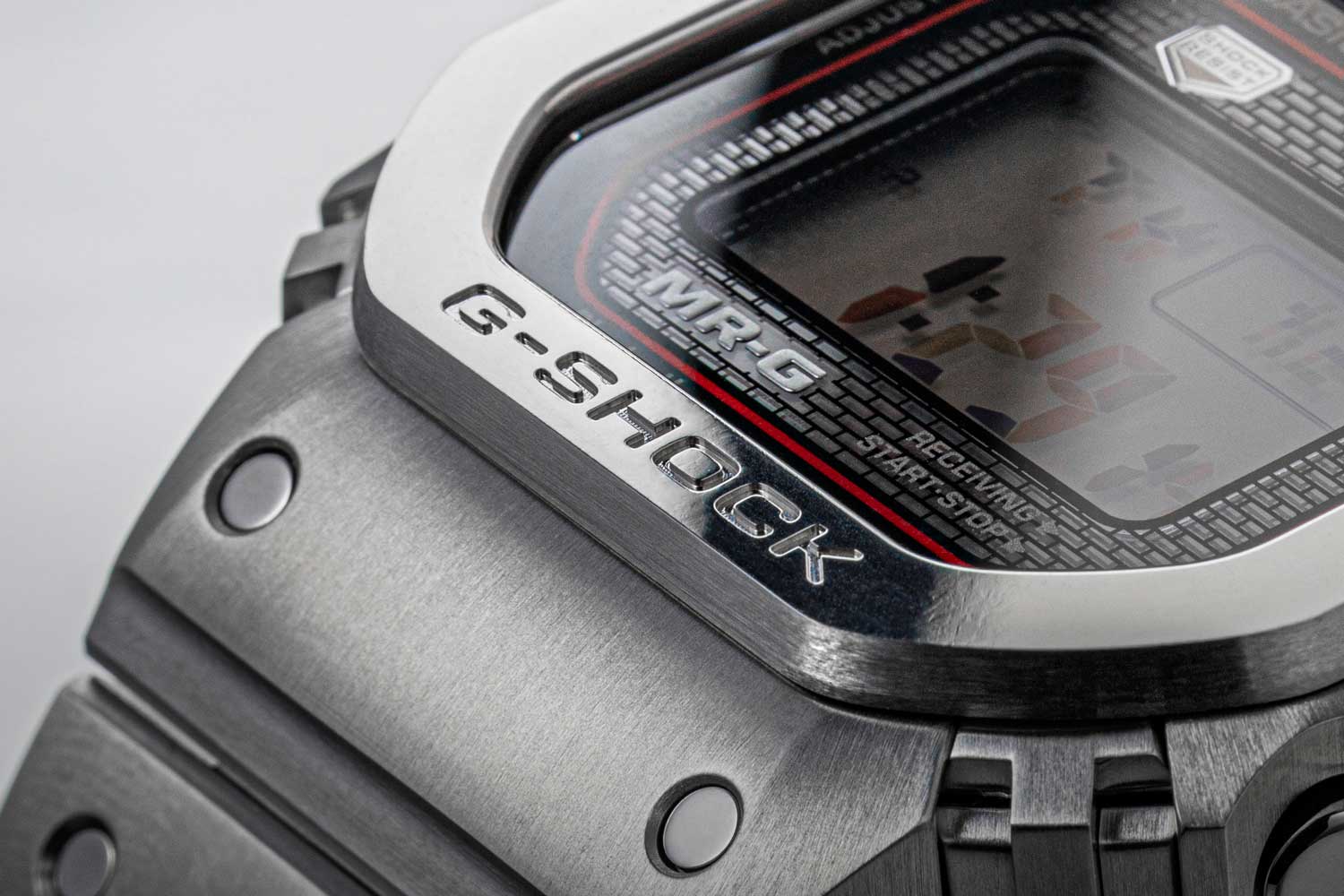
G-SHOCK MRG-B5000 (©Revolution)
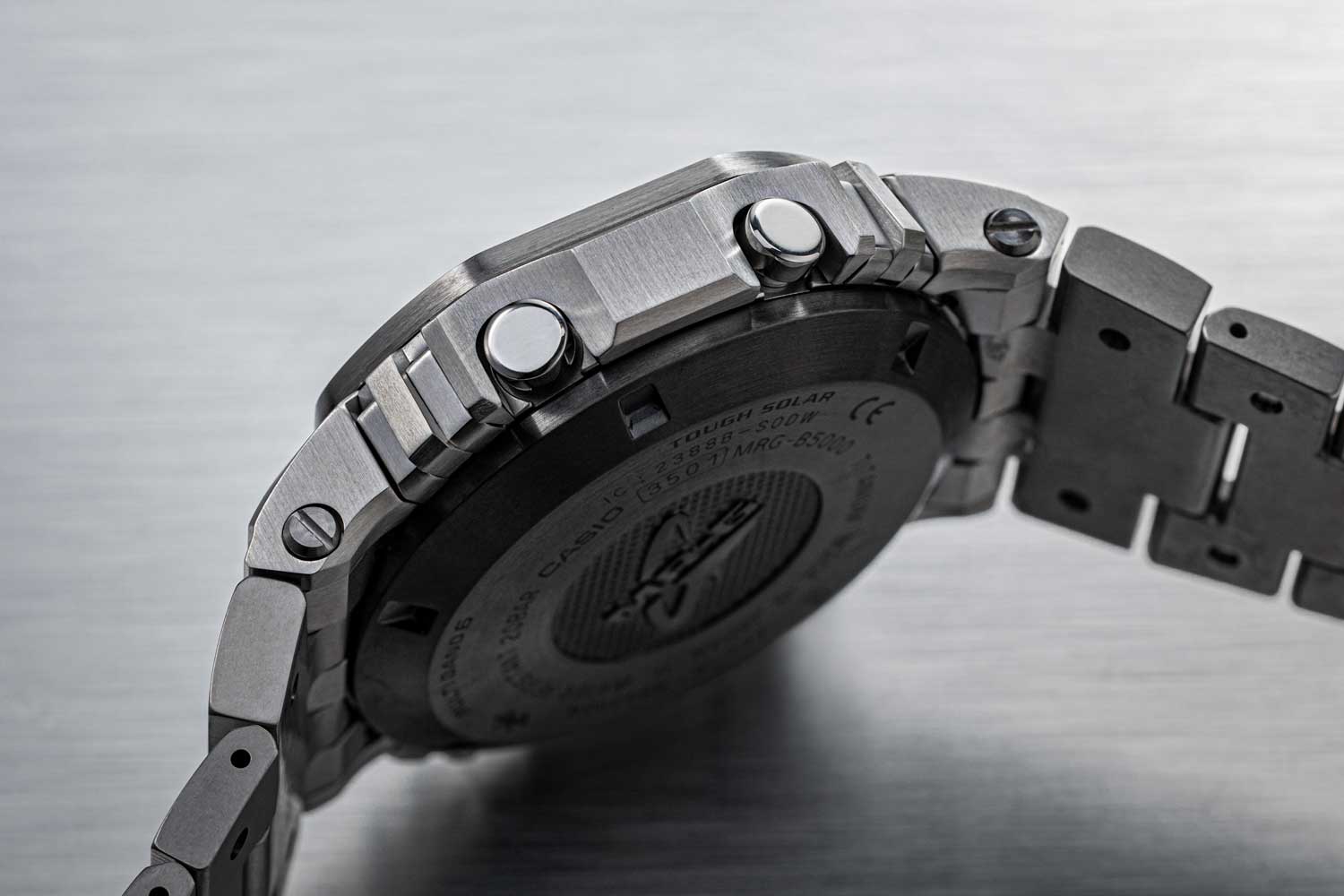
G-SHOCK MRG-B5000 (©Revolution)
Explains Ms Miho Nishimura at Casio’s Mechanical Development Unit: “Over a year was invested in developing the structure of the MRG-B5000 bezel, then its prototype, then our internal evaluation, and eventually the finalization of the structure. But it wasn’t smooth-sailing to say the least. There were a few areas that were especially challenging for us, such as subdividing the bezel while maintaining the shock resistant structure. As the bezel is divided into many parts while maintaining the shock resistant structure, the arrangement of the structure, fixing of parts and the placement of the shock absorbers were extremely crucial and challenging. For the initial drop tests, one of the many challenges was that the parts kept coming undone. The team had to come up with alternative measures and prototype manufacturing to resolve this issue. This design was revised for more than 10 times for us to get it right.” She continues, “Producing the small components for the bezel was the next challenge. Since the subdivided parts are small, it took a lot of time and effort to produce and polish.”
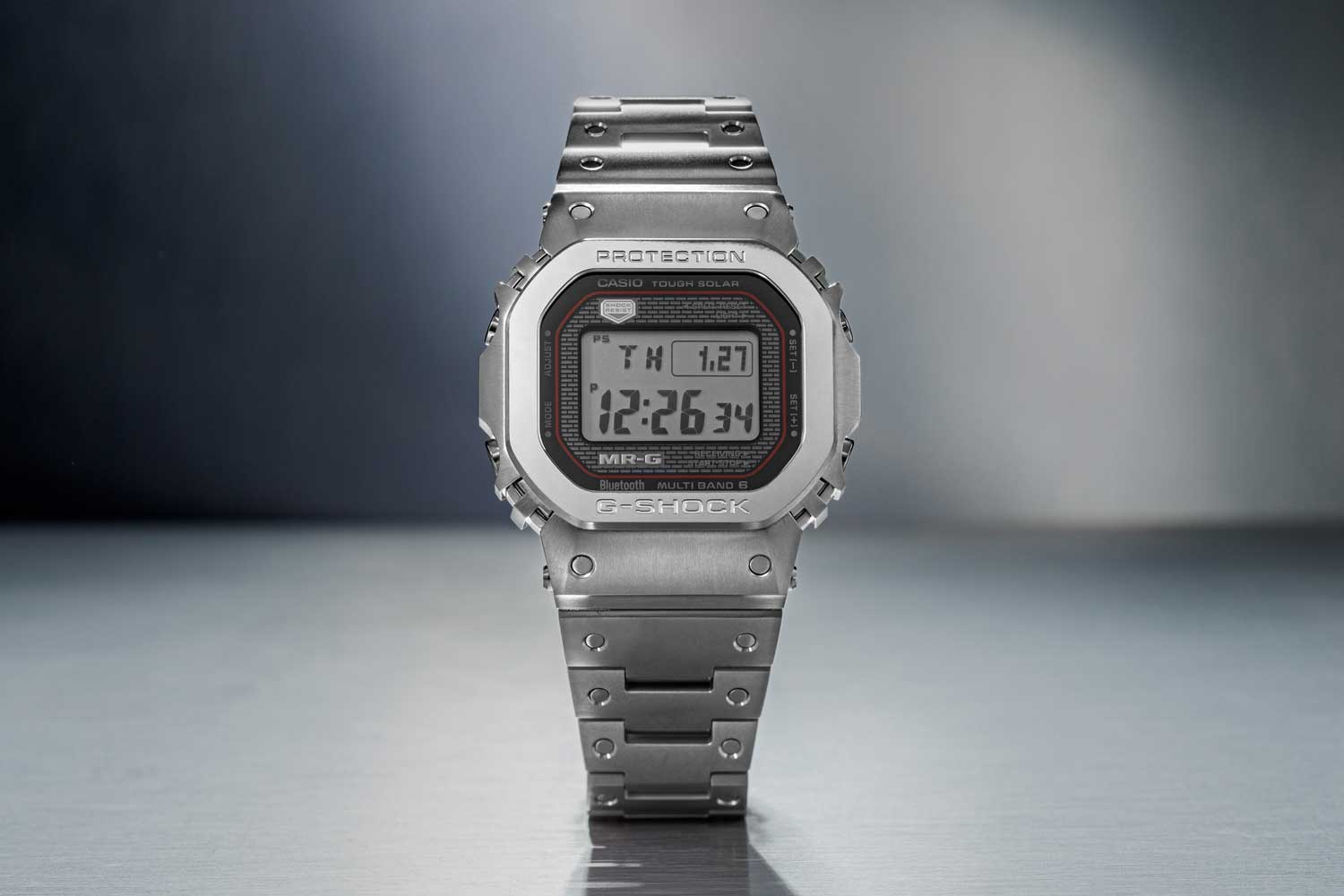
G-SHOCK MRG-B5000D-1 (©Revolution)
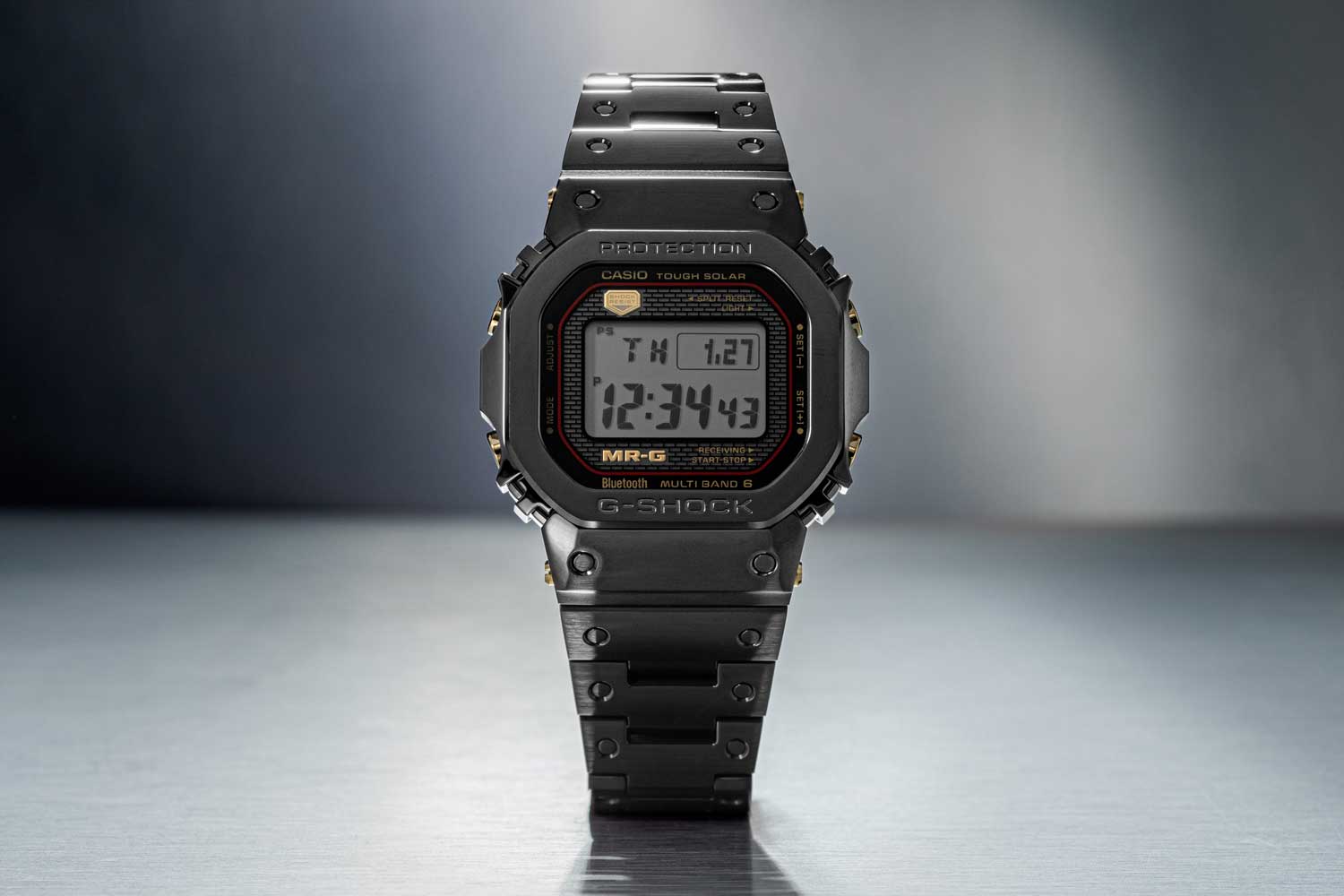
G-SHOCK MGR-B5000B-1 (©Revolution)

Ms Miho Nishimura from Casio’s Mechanical Development Unit
Ishizaka-san also mentions some interesting facts about the bracelet of the MRG-B5000, which is no longer made with single links. Rather, they’ve had to also form the links in parts to be able to polish every angle available. The bracelet is now formed in DAT55G with press-fit pins that make the iconic “dimples.”
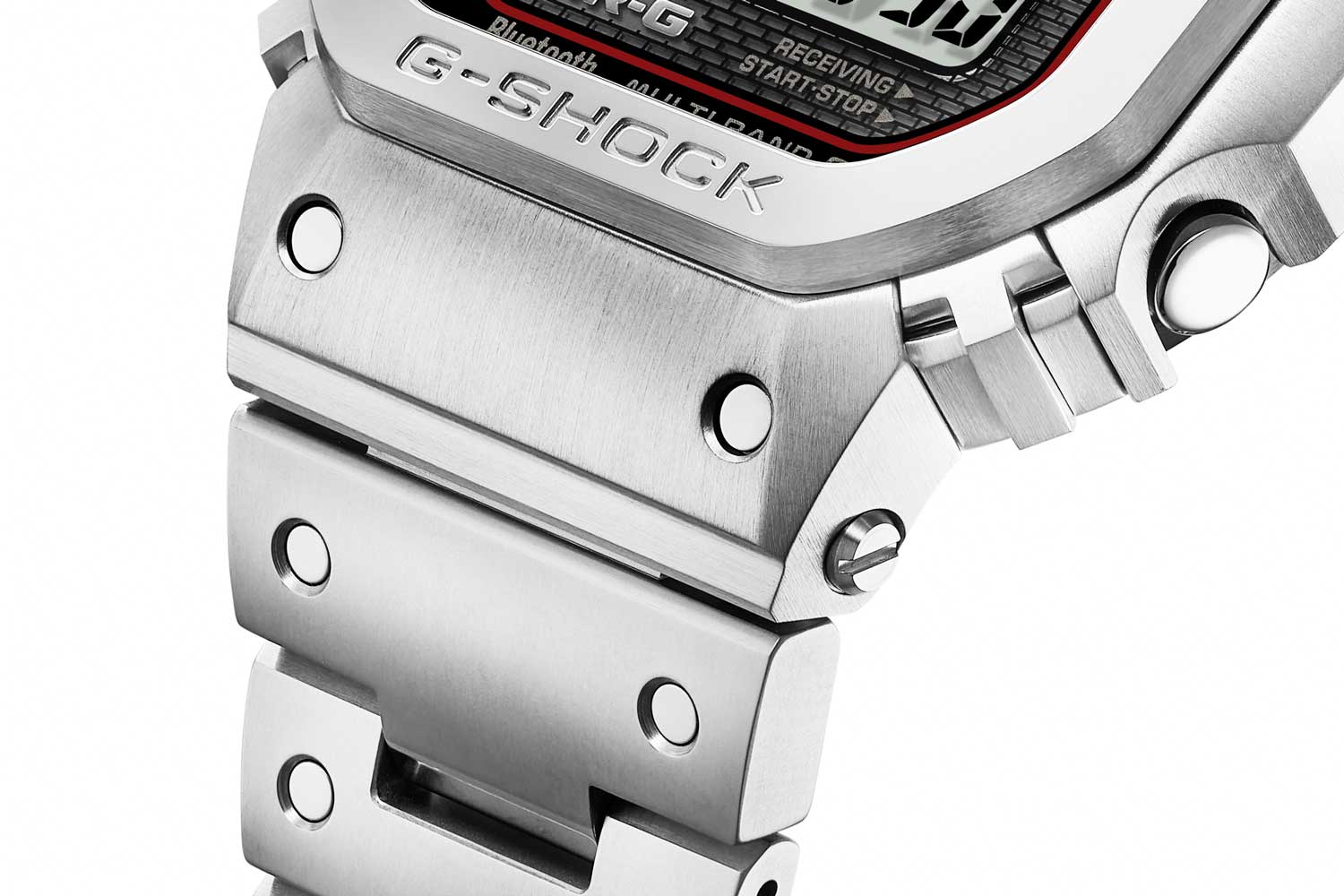
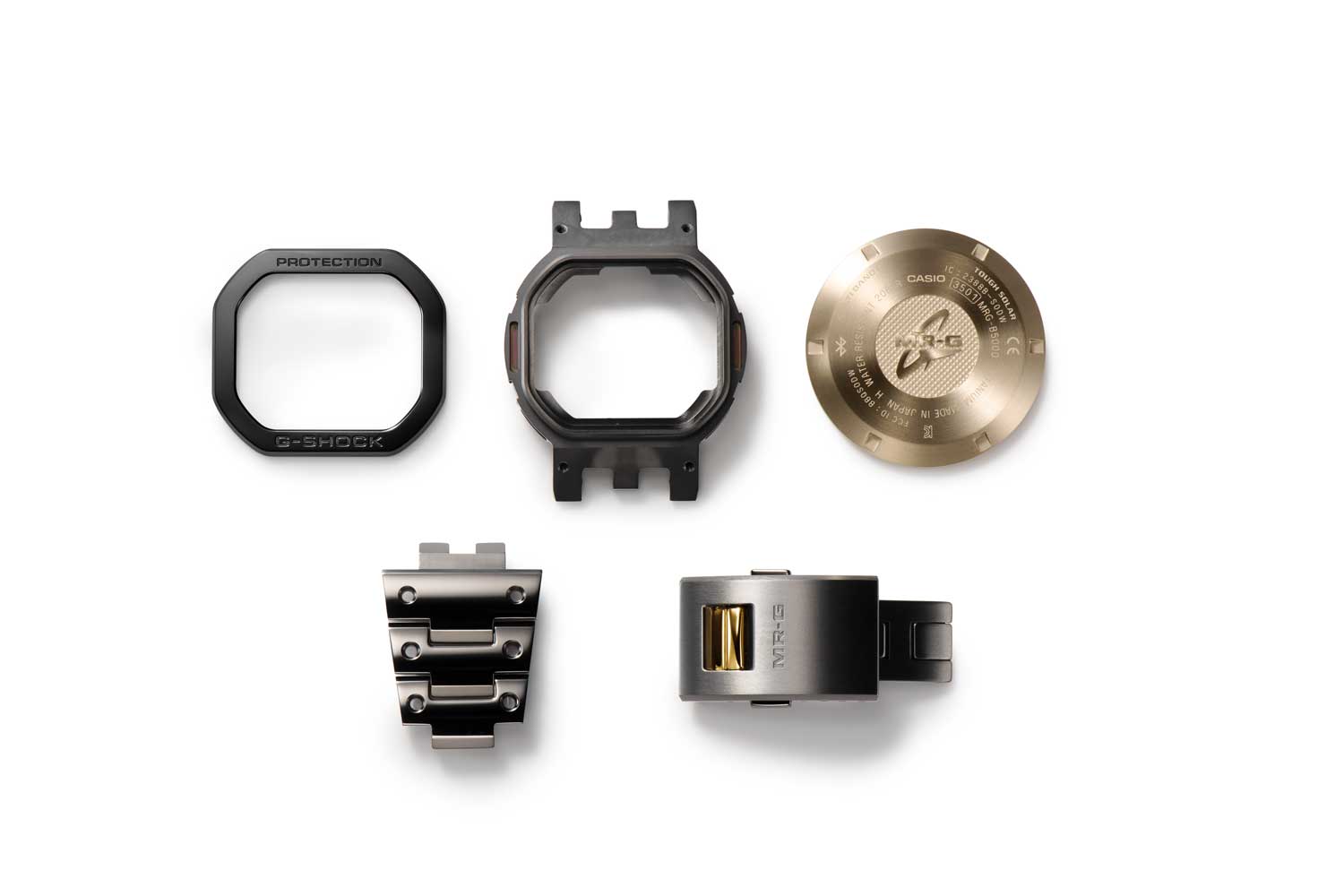
The complicated multi-part bezel, case and bracelet of the MRG-B5000 all feature Sallaz polishing executed by the hands of expert watchmakers on the Premium Production Line at Casio’s Yamagata manufacture (©Revolution)
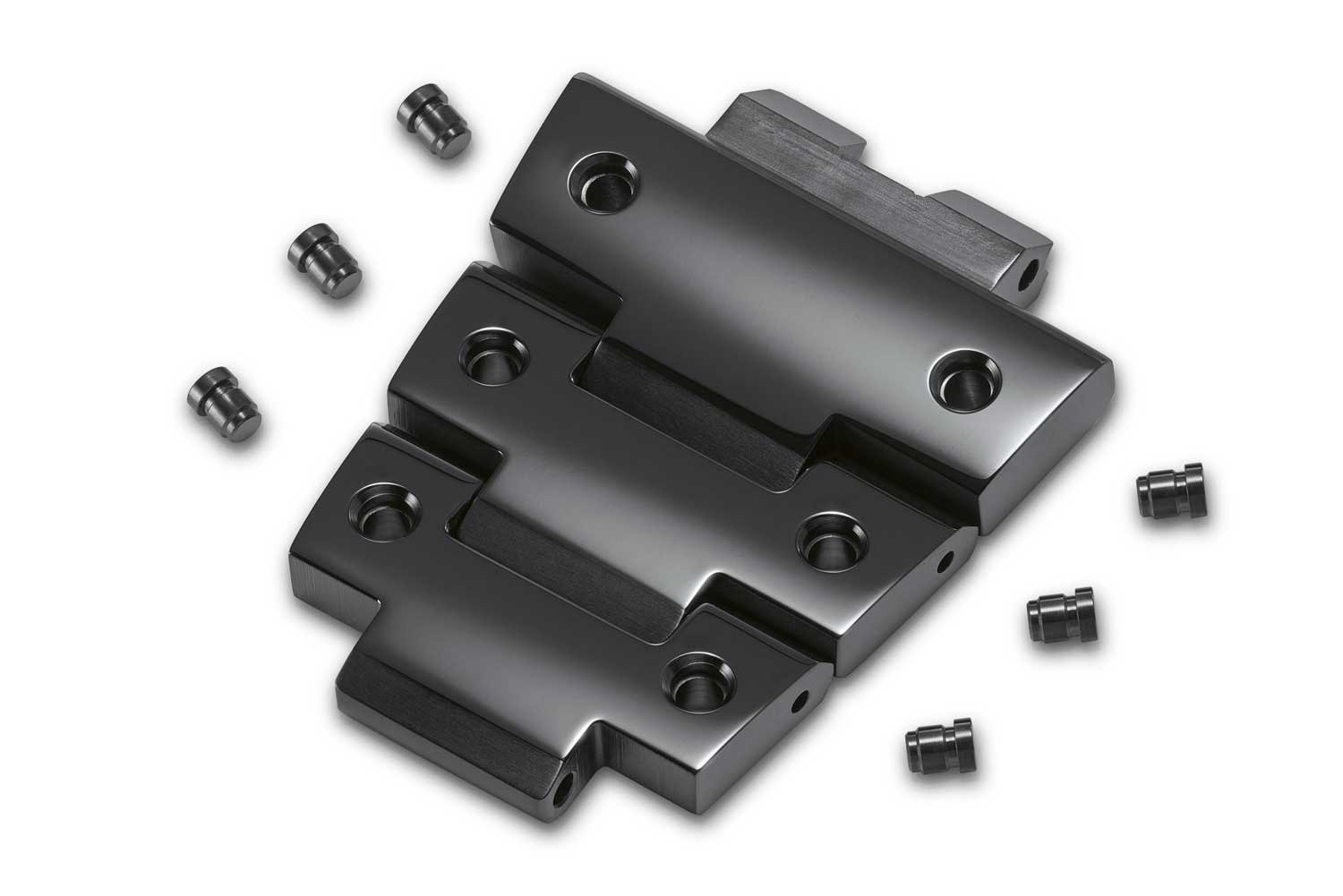
The band of the MRG-B5000 employs DAT55G, a titanium alloy with a hardness about three times that of pure titanium (Image: gshock.com)
With all of the work done and all of rationale provided, it still seems a lot of trouble to go through to reconfigure a formula for a shock-resistant watch that has otherwise worked superbly for nearly 40 years. To this Ishizaka-san rightfully suggests, “Compared to the shape of having the bumps and dips in a single part, the shape created by combining the 25 parts is sharper and more beautiful as each part has been polished individually. As per the phrase ‘beauty is in the details,’ we believe that attention to each detail makes the MRG-B5000 design beautifully noble. As the watch is made of metals that are harder than titanium and stainless steel, it is not easily scratched and can retain its beautiful texture for a long period.” Essentially, what he’s saying here is that Casio cut zero corners in the pursuit of the kiwami expression of their most iconic G-SHOCK.
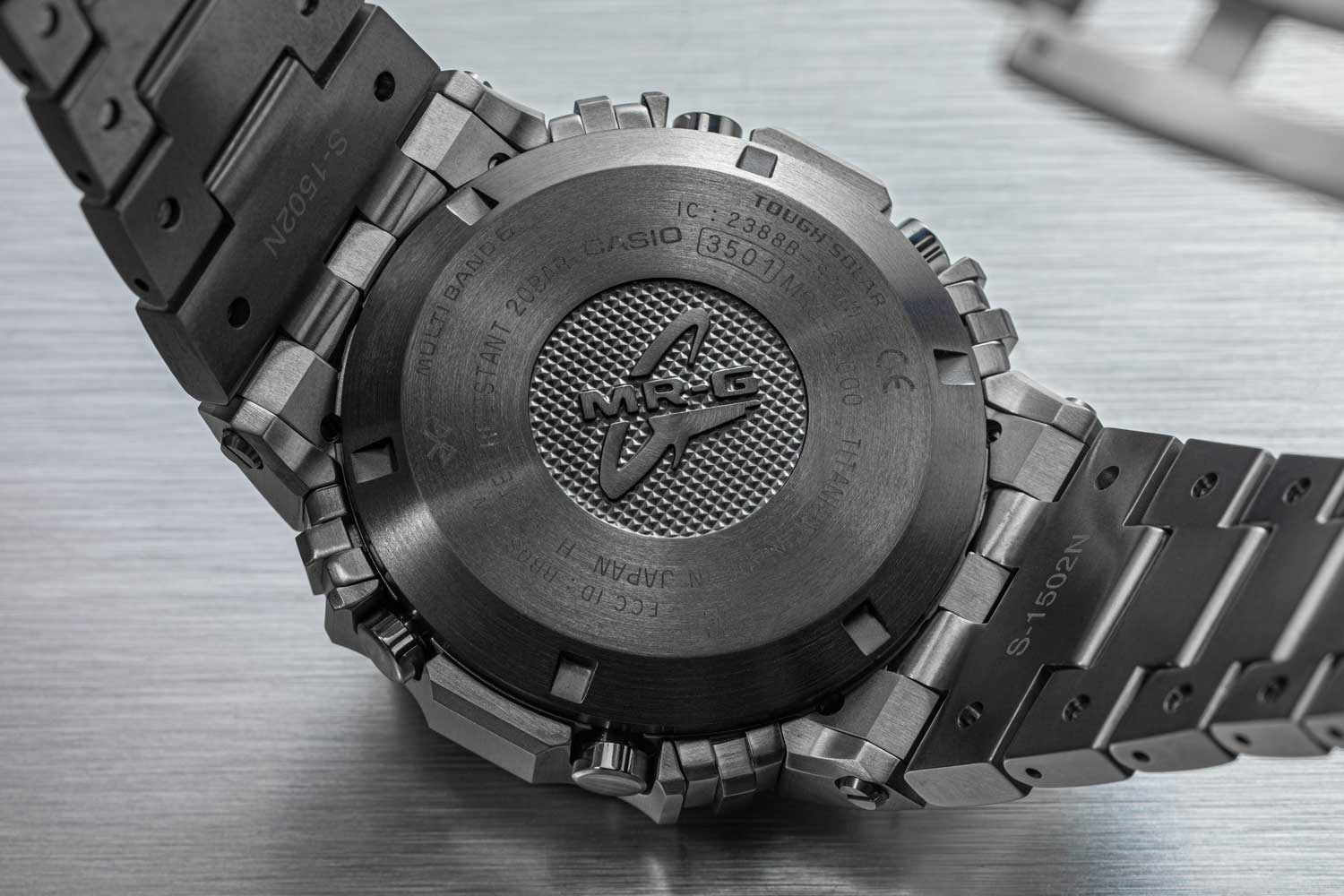
G-SHOCK MRG-B5000 (©Revolution)
Tech Specs
Movement: Quartz module, radio time signal control, solar charging, 22 months power with the power-saving function* ON after full charge, smartphone link via Bluetooth
Functions: World time, day, date, alarms, chronograph and countdown timer, auto daylight saving time
Case: 49.4×43.2×12.9mm; approximate weight 114g; water resistant to 200 meters
Band: Bracelet forged DAT55G
Price: MRG-B5000B-1 SGD 5,999; MRG-B5000D-1 SGD 4,999




